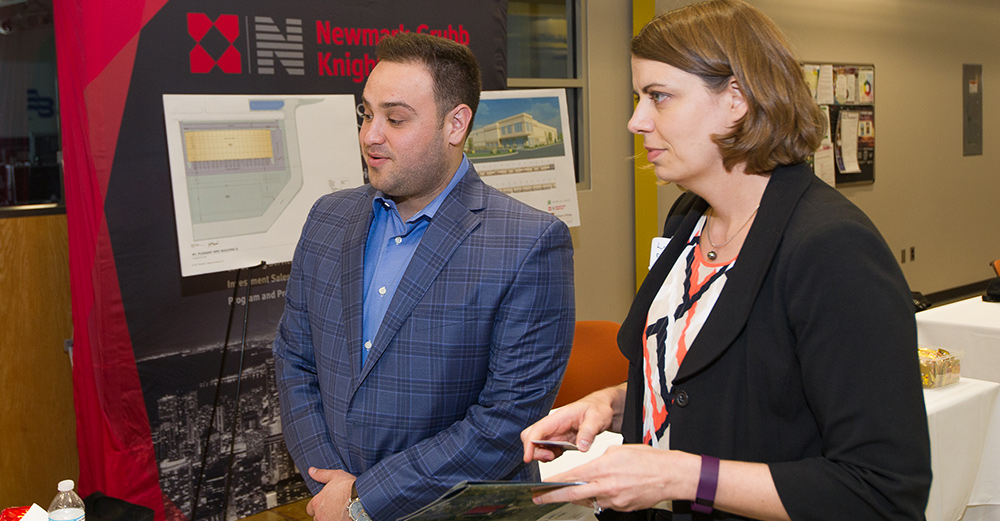As a group of 18 institutions, the Higher Education Regional Alliance (HERA) represents more than 140,000 students across southeastern Wisconsin who are key to driving our economy forward. However, finding and recruiting talent can be a challenge. To combat this, HERA established the Best Practices for Recruiting (outlined below) to share creative ideas on how employers can collaborate with and recruit from our region’s universities and colleges.
BEST PRACTICES FOR RECRUITING

(1) Invest time in strategically using Handshake
Handshake is an all-in-one early talent recruiting platform that is used across all HERA colleges and universities, and by over 1,400 colleges and universities nationwide. Just as human resources and talent acquisition professionals have invested time into learning the in’s and out’s of Linkedin for recruiting purposes, early talent recruiters should invest that time into learning the in’s and out’s of Handshake as it is the place to post jobs, internships, and co-op’s for students and young alumni. Additional recruiting functions within Handshake include finding upcoming fairs and events to participate in, the ability to post interview schedules, the ability to post events your organization is offering to students (i.e. open houses, virtual information sessions, etc.), and Handshake messaging/sourcing.

(2) Build relationships with career services
In addition to investing time in Handshake, early talent recruiters should also invest time into building relationships with career services professionals. While Handshake is a great place to connect with students, career services professionals can help you to better understand the career landscape at their institution. Think of career services
professionals as your eyes and ears at the university level. Stay connected, share your recruiting outcomes, and strategize with this group on how best to achieve the recruitment goals your organization has set.

(3) Small recruitment/networking event
Rather than hosting large scale events for students, consider hosting smaller, more intimate events that provide students the opportunity to really get to know you, and for you to get to know them. Think quality over quantity. Reach out to specific campus career centers to find out what niche events might appeal best to their students.

(4) Diversity Equity and Inclusion (DEI) recruitment best practices
Consider connecting with student affinity clubs and organizations to find impactful ways of recruiting diverse students. Reach out to your career services contact person and ask to be connected with the cultural clubs and organizations. The inclusive hiring process actively recognizes diversity and embraces a wide range of qualities and
perspectives that candidates bring to the organization. It’s not simply about recruiting people from underrepresented backgrounds or with disabilities in an effort to tick off a box. Instead, inclusive hiring practices aim to level the playing field for all applicants in order to fight against recruitment bias and any form of discrimination

(5) Career fairs
Virtual, in person, individual campuses and collaborative events. Career Fairs and networking events continue to remain a great place to recruit emerging talent. Some colleges are starting to collaborate with other colleges and universities to host career fairs and networking events. Check with career services staff about upcoming events, if you don’t see them posted on Handshake.

(6) Site Visits/Career Exploration Tours
Invite students to tour your facility/office so students can picture themselves working at your company. By organizing a tour companies can show off all the perks of working for the company. It’s also a helpful experience for students to learn about concepts like Affinity Groups/ERGs and other networking opportunities within an organization.

(7) Come to campus
It can be challenging to get a group of students to an employer site. Spend time on campus and be visible to students on a regular basis – beginning, middle and end of program. Top of mind awareness takes time and the more familiar students are with an employer (roles, culture, opportunity) will help guide students to want to apply with an
employer. When you come to campus, bring your company culture with you.
- Service-Learning Project
- Project Based Learning
- Tech Challenge
Through organizing a day of service located on a college campus, employers can connect with potential students and provide branded marketing materials. Employers will demonstrate their commitment to service in the community through bringing a project or tech challenge to a college campus. Additionally, when recent graduate

(8) Tabling
Instead of waiting for students to walk by a table on campus and engage with your company representative, invite students from related clubs and organizations or a department fellow/campus ambassador to join you at the table. Other students will want to engage with the student at the table and then learn more about your company. If you are sponsoring an event in the community, consider bringing a student who works for your company to the event to help market your job opportunities.

(9) Provide information about internships and other experiential learning opportunities on company websites
Ideally this would include brief descriptions for each of the professional areas for internships. Specific application information is important too: deadlines, timeline of process, and what should be submitted. Provide responses to student inquiries about internship / experiential learning opportunities if there is no information on the company website.

(10) Pay and Benefits Transparency
Skilled, career-ready students have choices and are savvier about evaluating organizations. Share pay ranges, growth and professional development opportunities. As part of compensation, also share and be open about benefits. Consider student loan repayment, which according to a consumer survey conducted by Oliver Wyman in the The Student Loan Repayment Benefit Opportunities To Serve A Pressing Financial Need, has more impact than additional contributions to retirement funds: “58% of survey respondents with outstanding student debt indicated that they would prefer that their employer make payments to help reduce their student debt versus making additional contributions to their retirement funds.”
For additional beneficial information on current recruiting trends, check out the Recruiting Trends Report from the Collegiate Employment Research Institute at Michigan State University.
